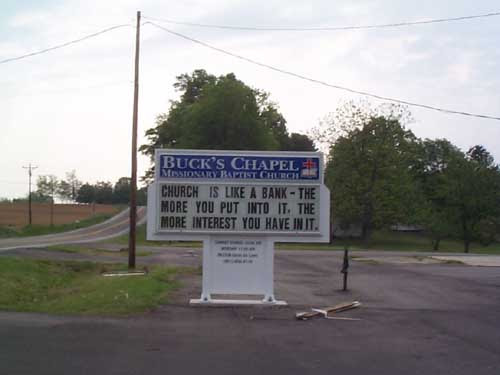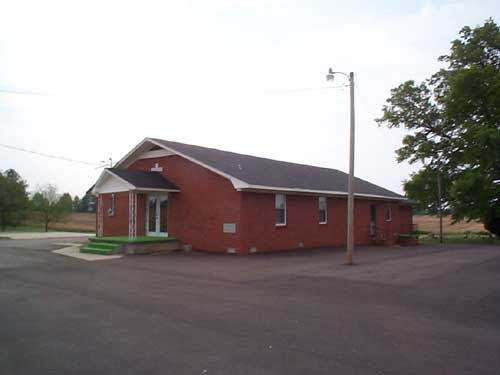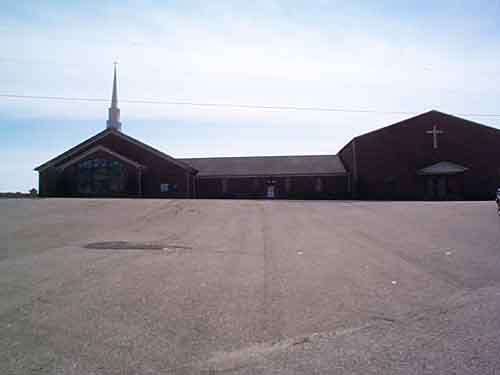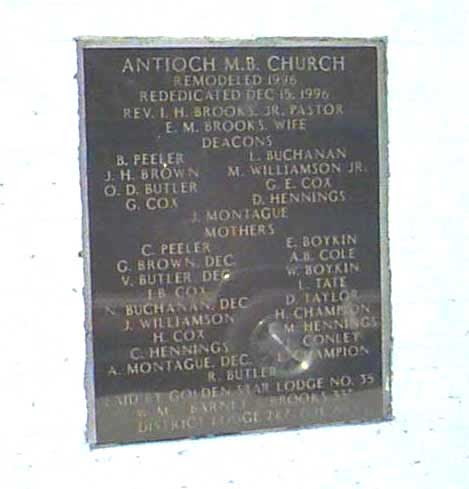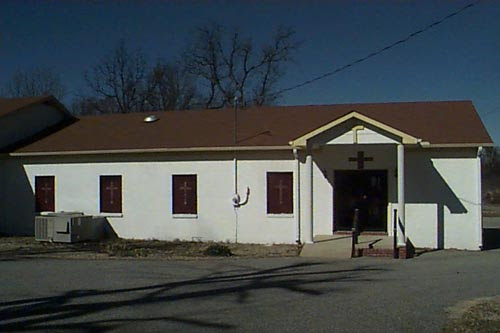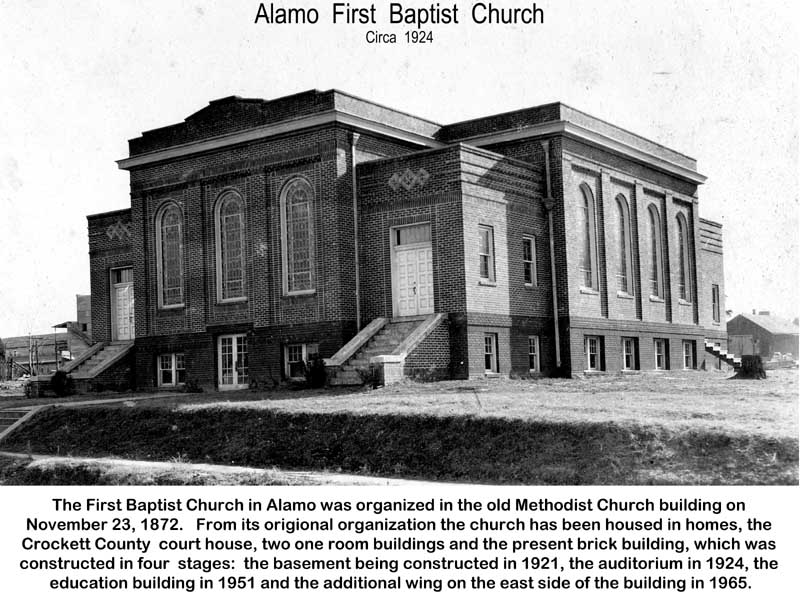(The following article was published by the Crockett Times, Alamo, Tennessee in a special edition, for the dedication of the new church building, Sunday, July 6, 1952. The article was titled, “Through The Years With the Alamo Methodist Church”, and was co-written by Mr. Theo J. Emison and Mrs. S. Homer Tatum, both active members of the church. This issue had many interesting articles concerning the activities of the church. The History of Alamo United Methodist Chrch continues and additional research will bring forth the relevance of the church to its community since the dedication of this new structure.)
The Alamo Methodist Church was organized in the year 1849 when the community was known as Cageville and was a part of Haywood county. It is believed to be the oldest church in this section of West Tennessee. In January, 1853, the first property was acquired for the church by a deed from Isaac M. Johnson. This property consisted of a lot, having a footage of 100 feet, on what is now known as Johnson Street and which was the North side of the lot presently occupied by the church. The first floor of a two-story building on the property was used by the church and the second floor was used by the Independent Order I.O.O.F. No. 72, and the Order of the Sons of Temperance, No. 21. At the time of acquisition of this first property, the following men constituted the Board of Trustees of the Church: John M. McFarland, Jessie Harris, Dan’l White, Thomas Yandle and Hugh Matthews. In 1866, this original frame building was moved across the street and was established as a school, known as the Cageville Academy. Then, in the midst of what would appear to be a wilderness those early Methodist, with a remarkable vision, and a great faith in God, began the erection of a beautiful structure which served as a place of worship for over 80 years. About the time of completion of this two story colonial frame Church building in March, 1869, Isaac M. Johnson gave the church an adjoining lot which completed the city block presently owned by the church. The Board of Trustees at that time were: John McFarland, Jessie Harris, Isaac M. Johnson, H. M. Klyce and William A. Johnson. As to the construction of this beautiful Church building, it should be noted that H. M. Klyce was the contractor and a substantial contributor on this project, and he is believed to have been the architect as well.
On Sunday night, June 8, 1869, there was a service which must have deeply stirred the hearts and souls of those hearty pioneers for God and Country, a service of joy and thanksgiving, a service of dedication, for it was on that happy occasion that Bishop H. N. McTyeire of Nashville preached the sermon of dedication of what at that time was perhaps one of the most beautifully appointed Churches in all of West Tennessee. And it was generally understood that a part of the ceremony of dedication was the burning of the unpaid notes and mortgage which was held by H. M. Klyce. The second floor of this building, owned and occupied by the Orders heretofore mentioned, was to play an important part in the early political life of our people and of the County. The organization of Crockett County, as we know it, took place there on March 12, 1872. And the first Courts were held there. The Alamo Baptist Church was organized in the Methodist Church building on November 23, 1872. Many were the important meetings held there. It was only the first floor of this two-story, frame, colonial building which was originally used by the Church. The second story was used by the Orders of I.O.O.F. and the Free and Accepted Masons. It was not until September, 1923, that the Church acquired the rights of the Alamo Lodge No. 131 of I.O.O.F. On September 5, 1923 the Church bought the upper story of the brick building on the South side of Court Square known as the E. G. McLean building the purchase price being $1050.00. This upper story was transferred and conveyed to the trustees of Alamo Lodge No. 164, F. & A.M. and the trustees of Alamo Lodge No. 131 I.O.O.F. in consideration of which the trustees of the above mentioned Orders relinquished their title to the upper story of the church building, thus the Methodist acquired full possession. The Reverend E. L. Robinson, pastor 1922-1924, initiated this forward movement and under his ministry this upper story was converted into facilities for the development of a program of Christian Education. In 1927, Alamo Methodist Episcopal Church, South was transferred from the Alamo circuit and became one of the churches on the two-point charge, known as the Bells-Alamo Charge. In 1941 the charge was transferred from the Brownsville District to the Jackson District. In 1943, the Rev. James P. Irion was appointed as pastor to the Bells-Alamo charge. Recognizing the inadequacy of the present church building to meet the needs of the growing congregation, his faith and vision challenged the church to plan a long-range building program which would meet the needs of the present and future generations. More than two years of education and cultivation were required to harmonize the different opinions related to this movement. Many felt that the rich heritage which had come to them through the use of this magnificent colonial building which had served three or four generations, laid upon them a definite responsibility to provide for the present and future generations a more present day adequate building. Others shared the opinion that this rich heritage should be preserved by restoring, remodeling and redecorating the building to meet the needs.
A Church conference was called, at which time the pastor presented plans for a new building. The majority vote was in favor of accepting the said plans. From the date of the conference until the present the congregation has worked as a unit and in a spirit of love and cooperation. The Rev. C. H. Rayl was employed to provide architectural plans in consultation with the pastor, the Reverend James P. Irion and the building committee, composed of H. A. Thomas, W. C. Cullipher, Happle Bell, James B. Nance, Theo J. Emison. F. M. Porter, Mrs. S. Homer Tatum, Mrs. J. E. Klyce and Mre. E. O Prather, Jr. The building plans were prepared to accommodate and facilitate the three-fold work in worship, Christian education, and personal culture in the varied activities of fellowship and recreational programs. Special building features were: Sanctuary of Gothic style including the open chancel which was to be dedicated to the exclusive use of Worship; educational facilities which would meet the highest requirements of the General Board of Christian Education. The congregation is justly proud that each department has been provided with its own assembly and classrooms, thus making it possible for the Church School to properly function by departments. In addition to the above facilities, a general assembly hall and other recreational features have been provided; a spacious Church Parlor has been provided for social and business meetings; the well planned pastor’s study consists of a combined library and reception room in addition to the pastor’s private study. The frame, colonial building was demolished in the Spring of 1947 and the building plans were begun. During the ad interim the congregation worshipped in the Alamo High School Building. Despite the inconveniences the church enjoyed a steady increase in interest and attendance. By the Spring of 1848 the basement and the walls of the entire building had been completed and the congregation assembled in the basement for their regular church services. In 1950, the Alamo church became a station. The Reverend Harrell Townsend was appointed pastor. Under his able and concentrated leadership, marked progress in every phase of the church program has been noted. Only faith and prayer could enable the visualization of the immediate completion of the building. An indebtedness on the structure together with the amount needed for completion seemed as insurmountable obstacle. In the Spring of 1951 plans for refinancing and raising funds for completing the building were launched, culminating in a victorious financial achievement on Easter Sunday. architects were employed and contracts let for finishing the building. A. J. Tucker was added to the building committee. During these two years under the leadership of The Reverend Harrell A. Townsend as a full-time minister, the church has experienced a deepening of spiritual growth and increased membership, and an intensified and renewed interest in the general program of the church. Reviewing and analyzing the 6 year building program we find it has been so challenging in its difficulties and so thrilling in its rewards that the congregation has been inspired to “launch out into the deep” and achieve victories that come only through adventures in faith.
The roster of ministers who have served the Alamo Methodist Church since the year 1855 is as follows: 1855, Rev. Simpson Weaver; 1856, Rev. N. P. Ramsey; 1857 & 1858, Rev. C. J. Mauldin; 1859, Rev. J. R. Sykes; 1860, Rev. Wm. S. Harrison; !861, Reb C. J. Mauldin; 1862-1863, Rev. N. P. Ramsey; 1864, Rev. Andrew C. Smith; 1865-1866, Rev. James B. McCutcheon; 1867, Rev. W. J. Mahon; 1868-1869, Rev. James B. McCutcheon; 1870, Rev. B. M. Burrow; 1871-1872, Rev. Nathan Sullivan; 1873-1874, Rev. W. L. Duckworth; 1875, Rev. O. P. Parker; 1876-1877, Rev. W. B. Seward; 1878-1979, Rev. C. J. Mauldin; 1880, Rev. T. C. Holmes; 1881, Rev. J. D. Bush; 1882, Rev. B. A. Hays; 1882-1884, Rev. M. M. Taylor; 1885, Rev. George H. Martin; 1886, Rev. J. W. Knott; 1887-1888, Rev. J. M. Maxwell; 1889, Rev D. L. Hines; 1890, Rev. H. B. Owens; 1891-1893, Rev. W. A. Dungan; 1894, Rev. T. E. Smith; 1895-1896, Rev. Lee Sanders; 1897-1898, Rev. P. A. Fowler; 1899, Rev. J. Calvin Wilson; 1900, Rev. J. G. Burke; 1901-1903, Rev. W. Hardy Neal; 1904-1905, Rev. J. C. Throgmorton; 1906-1908, Rev. T. S. Stratten; 1909-1910, Rev. T. N. Wilkes; 1911, Rev. R. W. Thompson; 1912-1915, Rev. U. S. McCaslin; 1916-1917, Rev. J. C. Rudd; 1918, Rev. W. L. Suggs; 1919, Rev. R. A. Wood. 1920-1921, Rev. A. C. Moore; 1922-1924, Rev. E. L. Robinson; 1925, Rev. W. L. Drake; 1926, Rev. J. E. James; 1927, Rev. V. A. DeShazo; 1929, Rev. C. A. Riggs; 1930-1932, Rev. W. T. Garner; 1933, No one listed; 1934, Rev. G. T. Sellars; 1935-1938, Rev. R. P. Bryant; 1939, Rev. Wm. M. O’Donnell; 1940-1942, Rev. E. V. Underwood; 1943-1949, Rev. James P. Irion; 1950-19 , Rev. Harrell A. Townsend (This is a list of the pastors who have served since the above article was written)
Contributed by Margaret N. Nichol
